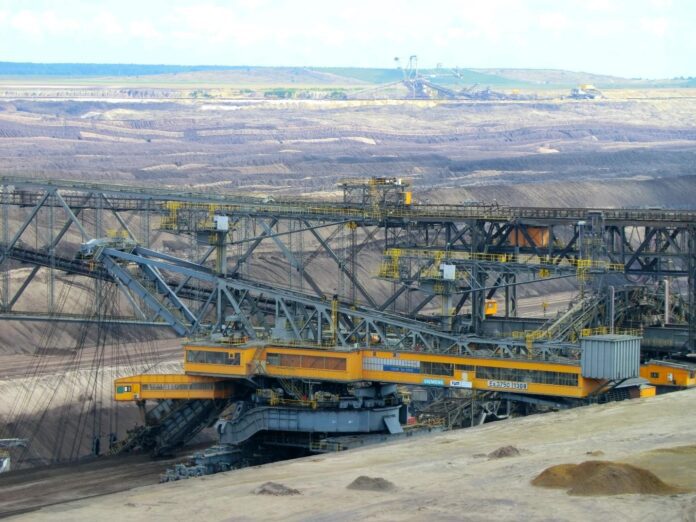Many industries use conveyor systems as the standard mechanical handling equipment to move raw materials, products, and other materials to different locations on the same premises. Conveyor systems benefit companies that frequently handle heavy goods, raw materials, sharp items, etc.
They allow efficient and swift transportation of a wide variety of business materials. For instance, auto manufacturers use conveyor systems to move vehicles down the production line. Therefore, they are prevalent in product manufacturing, packaging, and handling industries. But this is not their only use.
Besides industrial applications, conveyors are extremely handy in consumer-based services like transportation and food. You can find them in airports, shopping centers, supermarkets, and sushi restaurants. They help move heavy items and move people or small plates more efficiently. At the airport, conveyors can help you swiftly race between gates when running late for your flight.
We will discuss conveyor systems in more detail in this post. Please keep reading to discover their varieties, industrial applications, considerations for use, and benefits.
A conveyor system can fit into various industrial operations to enhance speed and efficiency. It is best to examine a range of essential considerations before installing a conveyor system, such as:
Space
Conveyor manufacturers typically scrutinize the available space when developing their system design. This step assesses interaction points, obstructions, clearances, or possible places that may affect material movement.
Load capacity
Once you identify the system setup and give it a pattern, it is time to determine the number of materials it can handle. Overloading a conveyor may damage it or halt it while in operation. The overall length, drive system, and bed width will also influence your system’s load capacity.
Speed
A conveyor’s speed is calculated in feet per minute. Most conveyor systems have an average speed of 65 fpm. However, it’s possible to adjust the speed to meet the industry’s needs.
Configuration
Conveyors are available in various shapes, sizes, and designs – vertical, horizontal, curved, angled, z-framed, etc. You must understand the restrictions involved in installing each conveyor model.
Drive system
An automated conveyor’s drive system is the power that moves products and materials. It is equipped with a counter to control the movement of materials along the belt. In addition, a conveyor can be designed to transport materials in both directions and can be fitted in the system’s beginning, middle, or end.
On the other hand, overhead conveyor systems have similar drives; some are driven by a sprocket while others by a chain. Granular materials, liquids, and powders can have screw drives or pneumatic power conveyors.
A drive system can have variable or single speeds depending on its design. It has a gear system run by a motor. Variable drive systems are increasingly becoming popular because they allow changes in the flow of items.
Image source: https://unsplash.com/photos/tkpK5vuBqaY
3 Types of Conveyor Systems
There are many conveyor types for any application; some work better than others. Some applications may also require multiple models to work optimally. Therefore, take your precious time and assess your industry requirements before you purchase a unit. Here are three popular types of conveyors:
Beam trolley conveyor
This conveyor system has withstood the test of time. The trolley is installed on an overhead beam, meaning you can quickly move anything on the trolley along the beam. It allows you to transport heavier loads conveniently and helps you smoothly maneuver around curves. The load’s weight drives the system, meaning you won’t be concerned with the motors, power, and the relevant costs.
However, being load-driven is not such a great thing – it’s not easy to incline or decline your materials.
Belt conveyor
The belt conveyor is the most popular conveyor type. It’s a massive loop comprising PVC or rubber, and multiple rollers power the system. Therefore, this conveyor is ideal for moving small or fragile materials. However, the rubber construction will have a problem handling abrasive, corrosive, or heavy materials.
Motorized/live roller conveyor
A roller conveyor is the opposite of a belt conveyor. Rather than pulleys powering the belt, it uses a belt to drive the rollers. When the belt simultaneously powers the rollers, the items on it move in the rotation’s direction. Live conveyors are ideal for moving materials of all shapes, sizes, and weights, but you may lose substantial production if the system goes down.
Image source: https://unsplash.com/photos/Vk8NI43e3HM
Benefits of a Conveyor System
The primary role of a conveyor is to move products and materials from one place to another. Their design supports the movement of products humans would not carry by hand.
Conveyors can save you time and effort when moving materials to various places. Since you can incline them in a vast range of levels, moving products up and down floors is more convenient. These activities would otherwise cause immense physical strain if a human manually executed them.
Inclined conveyor belts can automatically unload items, removing the need for someone on the opposite side to receive them.
Image source: https://unsplash.com/photos/0DUxxHkRucs
Final Thoughts
Conveyors are gaining immense popularity, and experts have predicted the industry will reach the 10-billion mark by 2025. A conveyor system is a set of fundamental machines that transport products and materials from one place to another, enhancing efficiency and decreasing employee fatigue. When looking for a conveyor, it will help to identify the potential bottlenecks and which model serves your business objectives.
Consulting an experienced professional can also help you obtain a peak performance conveyor and rapidly expand your business. Importantly, don’t forget to incorporate the relevant health and safety standards around the workplace.
Help keep news FREE for our readers
Supporting your local community newspaper/online news outlet is crucial now more than ever. If you believe in independent journalism, then consider making a valuable contribution by making a one-time or monthly donation. We operate in rural areas where providing unbiased news can be challenging. Read More About Supporting The West Wales Chronicle
























